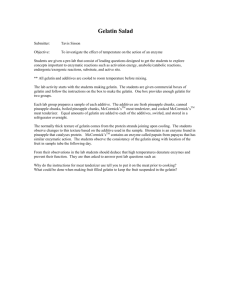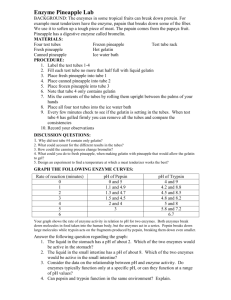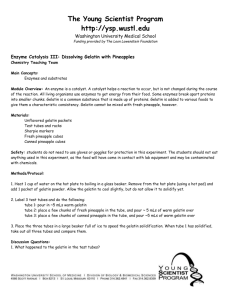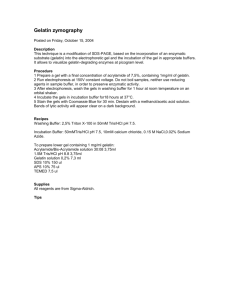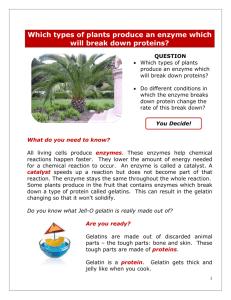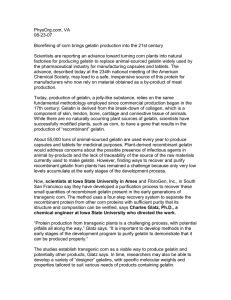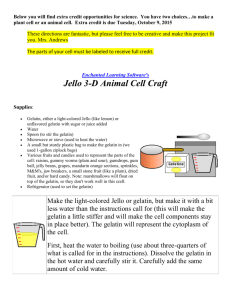Bromelain and Papain Enzyme Lab
advertisement
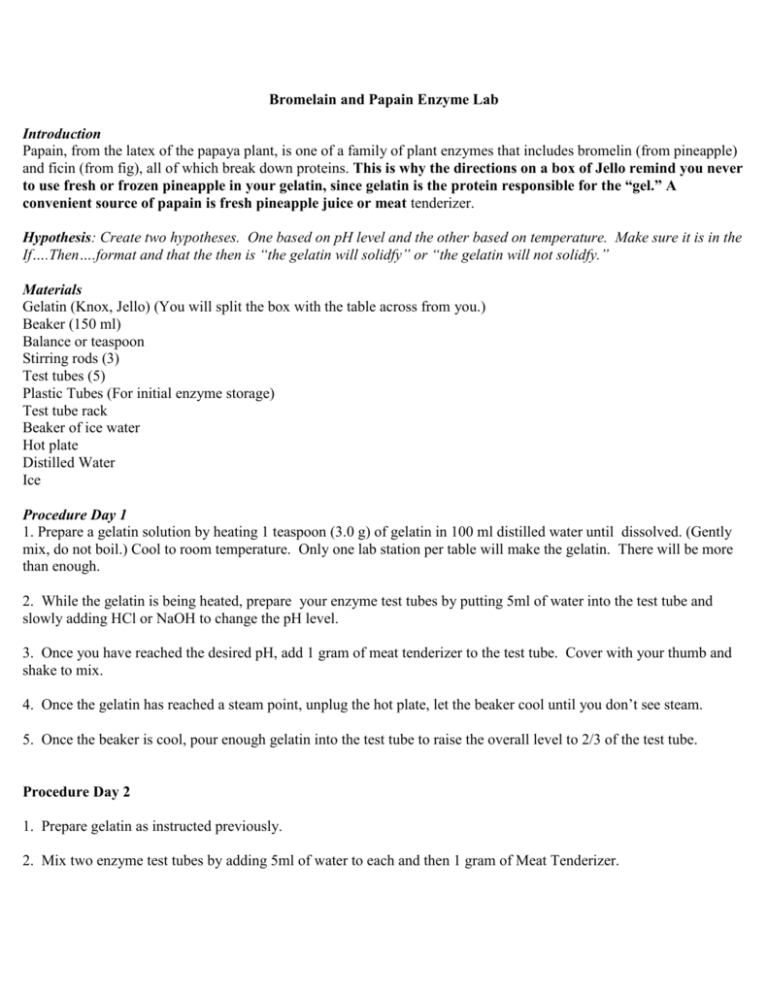
Bromelain and Papain Enzyme Lab Introduction Papain, from the latex of the papaya plant, is one of a family of plant enzymes that includes bromelin (from pineapple) and ficin (from fig), all of which break down proteins. This is why the directions on a box of Jello remind you never to use fresh or frozen pineapple in your gelatin, since gelatin is the protein responsible for the “gel.” A convenient source of papain is fresh pineapple juice or meat tenderizer. Hypothesis: Create two hypotheses. One based on pH level and the other based on temperature. Make sure it is in the If….Then….format and that the then is “the gelatin will solidfy” or “the gelatin will not solidfy.” Materials Gelatin (Knox, Jello) (You will split the box with the table across from you.) Beaker (150 ml) Balance or teaspoon Stirring rods (3) Test tubes (5) Plastic Tubes (For initial enzyme storage) Test tube rack Beaker of ice water Hot plate Distilled Water Ice Procedure Day 1 1. Prepare a gelatin solution by heating 1 teaspoon (3.0 g) of gelatin in 100 ml distilled water until dissolved. (Gently mix, do not boil.) Cool to room temperature. Only one lab station per table will make the gelatin. There will be more than enough. 2. While the gelatin is being heated, prepare your enzyme test tubes by putting 5ml of water into the test tube and slowly adding HCl or NaOH to change the pH level. 3. Once you have reached the desired pH, add 1 gram of meat tenderizer to the test tube. Cover with your thumb and shake to mix. 4. Once the gelatin has reached a steam point, unplug the hot plate, let the beaker cool until you don’t see steam. 5. Once the beaker is cool, pour enough gelatin into the test tube to raise the overall level to 2/3 of the test tube. Procedure Day 2 1. Prepare gelatin as instructed previously. 2. Mix two enzyme test tubes by adding 5ml of water to each and then 1 gram of Meat Tenderizer. 3. Once the meat tenderizer is in the water, cover with thumb and shake to mix. 4. Prepare an ice bath/hot water bath using either ice or the hot plate. 5. Add ice or heat until you reach your approximate assigned temperature. 6. Unplug the hotplate once that temperature is reached and rest the test tube into the hot bath. Or 6. Stop adding ice and add the test tube to the ice bath. 7. Wait 20 minutes. 8. Remove the test tube, mark it with your assigned temperature and place it into the class test tube rack. 9. Discard extra gelatin and clean up your station. Results pH1 pH2 pH3 pH4 pH5 pH6 pH7 pH8 pH9 pH10 pH11 pH12 Degree of solid (1-4, 1 is completely solid, 4 completely liquefied). Heat treated @ _______________ Solid? (Use same scale as above) Cold Treated @ _________________ Solid? (Use same scale as above) Analysis: Create a line graph to show the degree of solid for the pH level experiment. pH13 pH14

